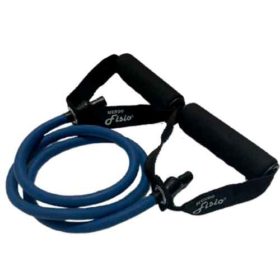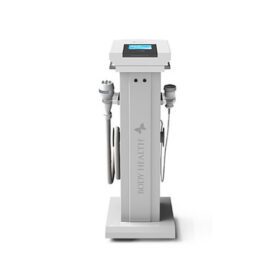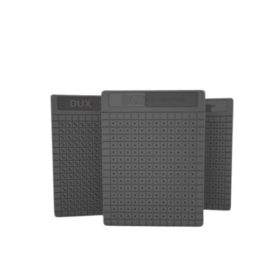Encontre o que precisa com preço baixo, pagamento facilitado no Cartão, Pix ou Bitcoin | Financie em até 48x | (62) 3999-1263 - (62) 99497-9204
Mastering Data-Driven Personalization in Email Campaigns: A Deep Dive into Audience Segmentation and Content Optimization #7
Achieving precise, effective personalization in email marketing hinges on more than just collecting data; it requires a strategic, granular approach to segmentation and content customization. While Tier 2 frameworks provide a solid foundation for integrating and analyzing customer data, this article explores the intricate, actionable steps to translate that data into highly targeted campaigns that resonate deeply with individual recipients. We will dissect advanced segmentation tactics, dynamic content creation, and automation workflows, complemented by real-world examples and troubleshooting tips, to elevate your email personalization to a mastery level.
Table of Contents
- Selecting and Integrating Customer Data Sources for Personalization
- Segmenting Audiences Based on Data Insights
- Designing Personalized Email Content Using Data
- Automating the Personalization Workflow
- Applying Machine Learning and Predictive Analytics
- Testing, Optimization, and Avoiding Common Pitfalls
- Measuring Impact and Scaling Personalization Efforts
1. Selecting and Integrating Customer Data Sources for Personalization
a) Identifying Essential Data Points (Demographics, Behavior, Preferences)
A granular understanding of your customers begins with pinpointing the right data points. Beyond basic demographics like age, gender, and location, incorporate behavioral data such as browsing history, purchase frequency, and cart abandonment patterns. Preferences, gleaned from surveys or interaction history, inform content relevance. To implement this:
- Audit existing data assets: Use data mapping tools to catalog all sources of customer information.
- Define core attributes: Prioritize data points that directly impact personalization, e.g., recent viewed products, loyalty tier, or communication preferences.
- Implement data enrichment: Use third-party providers or AI-based enrichment tools to fill gaps, such as inferred interests or predicted demographics.
b) Setting Up Data Collection Mechanisms (CRM, ESP integrations, Web tracking)
Establish robust pipelines to gather real-time and batch data:
- CRM integrations: Use APIs or middleware (like Zapier, Segment) to sync customer data from sales, support, and loyalty systems into your central database.
- ESP (Email Service Provider) integrations: Leverage native integrations or custom APIs to sync subscription status, engagement metrics, and form submissions.
- Web tracking: Implement JavaScript snippets (e.g., Google Tag Manager, Segment) to capture real-time browsing behavior, clicks, and time spent per page.
c) Ensuring Data Accuracy and Completeness (Validation, Deduplication, Enrichment)
Dirty data undermines personalization efforts. To maintain quality:
- Validation: Automate validation rules such as email syntax checks, duplicate detection, and mandatory field verification.
- Deduplication: Use tools like Redis or database constraints to prevent multiple records for the same contact, especially during imports.
- Enrichment: Integrate external data sources or AI models to append missing attributes, e.g., predicting interests based on browsing patterns.
d) Step-by-Step Guide to Syncing Data with Email Marketing Platforms
- Establish data pipelines: Use ETL tools like Talend or Stitch to extract, transform, and load data into your ESP or CRM.
- Map data fields: Align source data attributes with destination fields in your ESP (e.g., ‘last_purchase_date’ to ‘Purchase Date’ field).
- Set synchronization frequency: For dynamic data, schedule real-time or hourly syncs; for static data, daily updates suffice.
- Test the sync process: Validate data accuracy by comparing sample records before and after sync.
- Automate error handling: Configure alerts for failed syncs or data validation errors to ensure continuous data integrity.
2. Segmenting Audiences Based on Data Insights
a) Defining Segmentation Criteria (Lifecycle stages, Purchase history, Engagement levels)
Segmentation should be rooted in concrete, measurable criteria:
- Lifecycle stages: New subscriber, active customer, lapsed user, churned.
- Purchase history: High-value customers, repeat buyers, first-time buyers.
- Engagement levels: Opens, clicks, website visits within specified timeframes.
Use SQL queries or ESP segmentation tools to define these parameters precisely, ensuring they are mutually exclusive where necessary to avoid overlaps that muddy analytics.
b) Creating Dynamic Segments Using Automation Rules
Leverage automation features in your ESP or marketing platform to dynamically update segments:
- Set rules based on data triggers: For example, if a customer viewed a product in the last 7 days, automatically include them in the ‘Recently Engaged’ segment.
- Use conditional logic: Combine multiple criteria (e.g., high purchase value AND recent engagement) to refine segments.
- Implement real-time updates: Ensure segments refresh instantly as data points change, enabling timely campaigns.
c) Handling Overlapping Segments and Exclusions
Overlaps can distort campaign metrics. To manage this:
- Prioritize segments: Assign hierarchy levels, e.g., VIP > Recent Buyer > Browsers.
- Use exclusion rules: For instance, exclude VIPs from win-back campaigns to avoid redundancy.
- Employ Boolean logic: Use AND/OR/NOT conditions to create mutually exclusive segments, ensuring clarity in targeting.
d) Practical Example: Building a “High-Value, Recently Engaged” Segment
Suppose your goal is to target customers who:
- Have spent over $500 in the last 3 months
- Open or click an email within the past 7 days
Steps:
- Query your database: Use SQL to select contacts with purchase totals > $500 in recent date ranges.
- Filter engagement: Cross-reference with email engagement logs to identify active users.
- Create a dynamic segment: Use your ESP’s segmentation rules to combine purchase and engagement conditions.
- Test: Run a sample export to verify the segment’s accuracy before launching campaigns.
3. Designing Personalized Email Content Using Data
a) Crafting Dynamic Content Blocks (Personalized images, product recommendations, messaging)
Dynamic content blocks are the backbone of personalization. To implement:
- Identify key data points: Use purchase history, browsing behavior, or preferences to inform content variations.
- Use personalization tokens: Insert placeholders like
{{FirstName}}or{{RecommendedProduct}}that your ESP replaces dynamically. - Integrate product feeds: Connect your product database via APIs to generate personalized recommendations, e.g., “Because you viewed X, here are similar items.”
- Design adaptive templates: Ensure templates can accommodate multiple content blocks that change based on data triggers.
b) Leveraging Data Attributes to Customize Subject Lines and Preheaders
Subject lines and preheaders influence open rates significantly. Use data attributes as follows:
- Dynamic subject lines: For example,
"{{FirstName}}, your exclusive offer on {{ProductCategory}}". - A/B testing: Test variations with personalized tokens to identify high-performing combinations.
- Personalized preheaders: Use preheaders to reinforce the email’s relevance, e.g., “Because you loved X, check out our new arrivals.”
c) Implementing Conditional Content Logic (If-Else statements, variables)
Conditional logic enables tailored messaging within a single email:
- Syntax example:
{% if customer.purchase_frequency > 5 %}Thank you for being a loyal customer!{% else %}Explore our latest collection.{% endif %} - Use variables: Set variables based on customer data to control content flow, e.g.,
{% assign loyalty_level = 'Gold' %} - Best practices: Limit nested conditions to prevent complexity; test all branches thoroughly.
d) Case Study: Personalizing Product Recommendations Based on Browsing History
Suppose a customer viewed several hiking boots but didn’t purchase. You can:
- Use web tracking data to identify the viewed products.
- Generate a dynamic product feed via API that pulls similar items based on the browsing pattern.
- Embed in the email a personalized section with recommended products:
<!-- Dynamic Product Recommendations -->
<div>
{% for product in recommended_products %}
<div style="display:inline-block; width:120px; margin-right:10px;">
<img src="{{ product.image_url }}" alt="{{ product.name }}" style="width:100%; height:auto;" />
<p style="font-size:14px; margin:5px 0;">{{ product.name }}</p>
<p style="font-weight:bold; margin:5px 0;">${{ product.price }}</p>
</div>
{% endfor %}
</div>
4. Automating the Personalization Workflow
a) Setting Up Triggered Campaigns Based on Data Changes (e.g., cart abandonment, birthday)
Leverage real-time triggers to initiate personalized workflows:
- Cart abandonment: Detect when a customer leaves items in their cart and set triggers for immediate email follow-up, including personalized product suggestions.
- Birthday campaigns: Use date fields to send personalized birthday greetings with special offers.
- Data change triggers: For example, when a customer upgrades loyalty tier or updates preferences, trigger a re-engagement or targeted offer.
b) Using Workflow Builders for Multi-Stage Personalization Sequences
Create complex, personalized journeys:
- Design stages: Entry point (e.g., sign-up), engagement check (opens/clicks), conversion goal (purchase), re-engagement.
- Conditional branching: Based on customer actions or data updates, send follow-up emails tailored to their behavior.
- Timing control: Use delays and wait conditions to optimize engagement windows.
c) Managing Data Updates and Re-Engagements Dynamically
Ensure your workflows adapt to real-time data changes:
- Data refresh triggers: Connect your data warehouse to update contact attributes continuously.
- Re-engagement logic: Automatically identify inactive users and trigger personalized win-back campaigns.
- Tracking and adjusting: Monitor response rates and adjust workflows dynamically to improve effectiveness.
d) Practical Example: Automating Personalized Win-Back Campaigns
Suppose a customer hasn’t engaged in 60 days:
- Trigger setup




